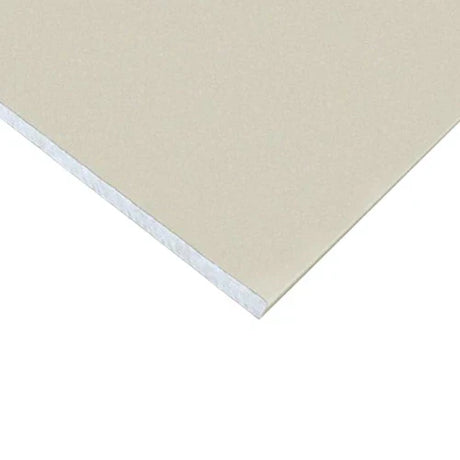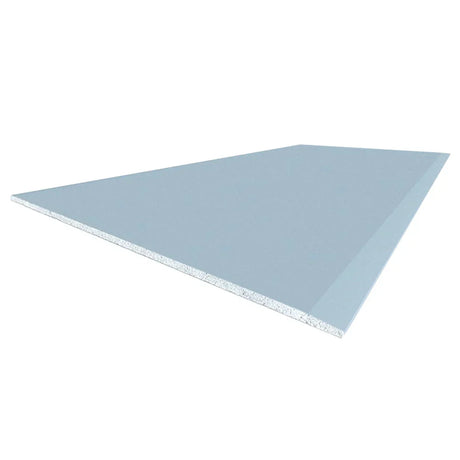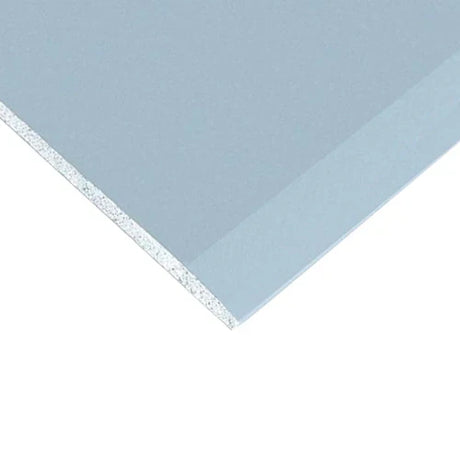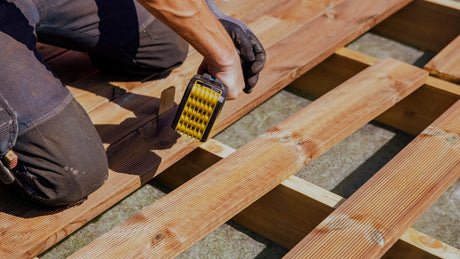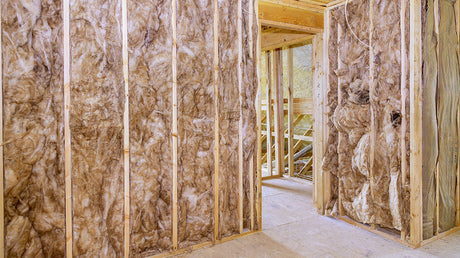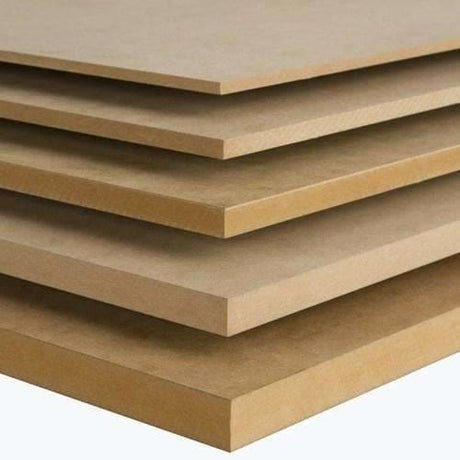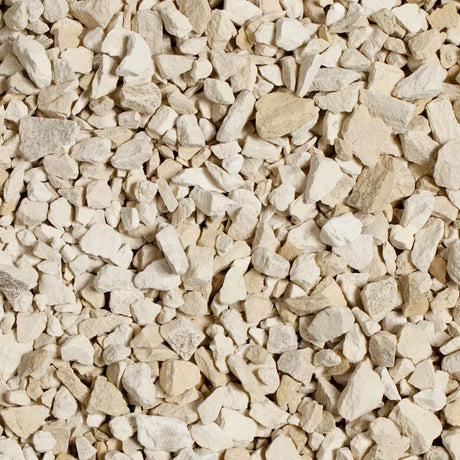Common errors and how to avoid them with corrugated, polycarbonate, and steel sheets
When it comes to roofing installations across the UK, proper technique separates amateur efforts from professional-grade results that stand the test of time. Whether you're a seasoned tradesperson or an ambitious DIY enthusiast tackling your first roofing project, understanding the critical mistakes that can compromise your installation is essential for achieving leak-free, durable outcomes. After years of supplying premium roofing materials to customers throughout the UK, we at DIY Building Supplies have witnessed firsthand how small oversights during installation can lead to significant problems down the line.
The importance of proper roof sheet installation cannot be overstated, particularly in our challenging British climate where materials must withstand everything from driving rain and strong winds to temperature fluctuations and occasional extreme weather events. A professionally executed installation doesn't just protect your property; it maximises the lifespan of your investment whilst ensuring compliance with building regulations and warranty requirements. Whether you're covering a new shed, garage, carport, greenhouse, or extension, the principles of quality installation remain consistent across all applications.
This comprehensive guide examines the ten most common installation mistakes we encounter and, more importantly, provides you with the expert knowledge needed to avoid them entirely. We'll cover the three primary types of roof sheeting most commonly used in UK construction: corrugated sheets for their versatility and cost-effectiveness, polycarbonate sheets for their light transmission properties, and steel sheets for their superior strength and longevity. Each material presents unique installation challenges and requirements that demand specific techniques and considerations.
Mistake #1: Choosing the Wrong Sheet Type for Your Application
One of the most fundamental errors we observe is the mismatch between sheet type and intended application, often resulting from inadequate consideration of the specific demands each project will place on the roofing material. This mistake typically stems from focusing primarily on initial cost rather than taking a holistic view of performance requirements, environmental conditions, and long-term value. The consequences of this oversight can be severe, ranging from premature failure and costly replacements to safety concerns and structural damage.
Consider the case of a customer who selected lightweight polycarbonate sheeting for a garage roof in an exposed coastal location, attracted by its light transmission properties and competitive price point. Within six months, the combination of salt air, strong winds, and thermal cycling had caused significant deterioration, necessitating complete replacement with galvanised steel sheets from a reputable manufacturer like Corus or Tata Steel. This costly mistake could have been avoided by properly assessing the environmental demands and selecting materials with appropriate strength characteristics and corrosion resistance.
The key to avoiding this mistake lies in conducting a thorough analysis of your specific requirements before making material selections. Steel sheets excel in high-load applications, exposed locations, and where long-term durability is paramount, making them ideal for permanent structures and commercial applications. Polycarbonate sheets offer excellent light transmission and impact resistance, making them perfect for greenhouses, conservatories, and areas where natural lighting is desired. Corrugated sheets provide an economical solution for applications where basic weather protection is required without the need for premium performance characteristics. Understanding these distinctions and matching them to your specific requirements ensures optimal performance and value from your investment.
Mistake #2: Incorrect Overlapping That Compromises Weather Protection
Proper overlapping represents one of the most critical aspects of roof sheet installation, yet it remains an area where we frequently encounter significant errors that compromise the entire system's weather protection capabilities. The complexity of achieving correct overlaps increases when working with different sheet types, each requiring specific overlap dimensions and techniques to ensure effective water shedding and wind resistance. Unfortunately, many installers treat overlapping as a secondary consideration, leading to installations that may appear satisfactory initially but fail catastrophically during the first severe weather event.
The consequences of incorrect overlapping extend far beyond simple water ingress. Inadequate horizontal overlaps, typically less than the recommended 1.5 corrugations, create pathways for wind-driven rain to penetrate the roofing system, potentially causing damage to underlying structures and insulation. Insufficient vertical overlaps, particularly when less than the minimum 150mm required for standard applications, can result in water backing up under sheets during heavy rainfall or when guttering becomes overwhelmed. In exposed locations or steep-pitched roofs, these minimum requirements may need to be increased to 200-300mm to maintain effective weather protection.
Professional installation requires understanding that overlap requirements vary significantly based on environmental conditions, roof pitch, and sheet type. Leading UK manufacturers like Marley and Redland provide detailed installation guides specifying overlap requirements for different applications, and these guidelines must be followed precisely to maintain warranty coverage. The investment in proper overlapping pays dividends through enhanced weather protection, reduced maintenance requirements, and extended material lifespan. Our technical team at DIY Building Supplies regularly assists customers in determining appropriate overlap specifications for their specific applications, ensuring installations meet both performance requirements and manufacturer specifications.
Mistake #3: Using Inappropriate Fixings That Lead to System Failure
The selection and application of appropriate fixings represents a critical aspect of roof sheet installation that directly impacts both immediate performance and long-term durability. We regularly encounter installations where standard screws or inappropriate fixings have been used, often leading to water ingress, sheet damage, and premature system failure. This mistake typically stems from underestimating the demanding conditions that roofing fixings must withstand, including thermal cycling, wind loading, and exposure to moisture and UV radiation over extended periods.
Standard wood screws or general-purpose fixings lack the specialised design features essential for roofing applications, particularly the integrated sealing washers that prevent water penetration at fixing points. Without proper sealing, each fixing point becomes a potential leak path, with water ingress often leading to structural damage and costly repairs. Additionally, inappropriate fixings may lack the corrosion resistance necessary for long-term exposure to the elements, resulting in fixing failure and sheet detachment during severe weather events.
The solution lies in specifying proper roofing fixings designed specifically for your chosen sheet material and substrate. Self-drilling roofing screws with integrated neoprene or EPDM sealing washers provide the optimal combination of penetration capability, holding power, and weather sealing. For steel sheet installations, fixings with appropriate corrosion protection, such as organic coated or stainless steel options, ensure long-term reliability. Our comprehensive range of roofing accessories includes fixings from leading manufacturers like SFS and Fischer, specifically designed for UK conditions and compliant with relevant standards. The modest additional cost of proper fixings represents excellent value when compared to the potential consequences of system failure due to inappropriate fixing selection.
Mistake #4: Failing to Pre-Drill Holes for Thermal Movement
The failure to pre-drill holes represents a common but easily avoidable mistake that can lead to cracked sheets, compromised fixings, and reduced system longevity. This error typically occurs when installers attempt to drive fixings directly through sheet materials without proper preparation, particularly problematic with brittle materials like polycarbonate or when working with thicker steel sheets. The immediate consequences may include cracked or split sheets, whilst long-term issues arise from the inability to accommodate thermal movement, leading to stress concentrations and eventual failure.
Polycarbonate sheets are particularly susceptible to cracking when fixings are driven without pre-drilling, especially in cold conditions when the material becomes more brittle. The thermal expansion characteristics of polycarbonate, significantly greater than steel or corrugated materials, demand careful consideration during installation. Without properly sized holes to accommodate this movement, sheets can buckle, crack, or pull away from fixings as temperatures fluctuate throughout the year. This problem is compounded in exposed locations where temperature variations are more extreme.
Professional installation requires pre-drilling holes approximately 2-3mm larger than the fixing diameter to allow for thermal movement whilst maintaining adequate fixing engagement. The drilling process should be undertaken with appropriate speeds and sharp drill bits to ensure clean holes without heat buildup that could damage the sheet material. For polycarbonate installations, holes should be positioned at the crown of corrugations to provide optimal support and weather protection. Our technical team can provide specific drilling recommendations for different sheet types and installation conditions, ensuring your project benefits from professional-grade installation techniques that maximise material performance and longevity.
Mistake #5: Installing Sheets in the Wrong Orientation
Sheet orientation errors represent surprisingly common mistakes that can completely undermine the performance of your roofing installation, often resulting in reversed weather protection, compromised UV resistance, and poor aesthetic outcomes. This mistake typically occurs with profiled sheets where the correct orientation isn't immediately obvious, or with polycarbonate sheets where the UV-protected surface must face outward. The consequences can be severe, ranging from accelerated material degradation to complete system failure in extreme cases.
Profiled corrugated sheets are designed with specific profiles that optimise water runoff when installed correctly. Installing these sheets upside down creates water traps and interferes with the natural flow of rainwater, potentially leading to ponding, increased loading, and eventual structural problems. The asymmetric nature of many profiles means that incorrect orientation can also affect the appearance of the finished installation, creating an unprofessional appearance that may be particularly problematic in visible locations.
Polycarbonate sheets present additional complexity due to their UV protection coatings, which are typically applied to one surface only. Installing these sheets with the UV protection facing inward exposes the unprotected surface to solar radiation, leading to rapid degradation, discolouration, and eventual failure. Quality manufacturers like Palram and Brett Martin clearly label the UV-protected surface, but this information must be checked carefully before installation commences. Taking time to verify correct orientation before fixing begins prevents costly mistakes and ensures optimal performance throughout the material's design life.
Mistake #6: Inadequate Support Structure and Incorrect Purlin Spacing
Insufficient structural support represents one of the most serious installation mistakes, often leading to sagging, excessive deflection, and potential collapse under load. This error typically stems from inadequate understanding of the load-bearing capabilities of different sheet types and the critical importance of proper purlin spacing in maintaining structural integrity. The consequences extend beyond immediate safety concerns to include poor drainage, accelerated wear, and potential damage to the building structure itself.
Different sheet materials require significantly different support arrangements, with polycarbonate sheets generally requiring closer purlin spacing than steel alternatives due to their lower modulus of elasticity and reduced load-bearing capacity. A typical multiwall polycarbonate installation might require purlin centres of 600-1000mm depending on sheet thickness and loading conditions, whilst steel sheets can often span 1200-1500mm or more. Exceeding recommended spans leads to excessive deflection, poor appearance, and potential failure under snow or wind loading.
Professional installations require consultation of manufacturer span tables and load calculations specific to your application and location. Factors including roof pitch, exposure category, and local snow and wind loads all influence the required support structure. Leading manufacturers like Corus and Kingspan provide comprehensive technical guidance including span tables, loading calculations, and installation recommendations. Our technical support team works closely with customers to ensure adequate structural design, often providing bespoke calculations and recommendations for challenging applications. This investment in proper planning and design prevents costly remedial work and ensures compliance with building regulations and structural requirements.
Mistake #7: Poor Flashing and Edge Sealing Details
Inadequate attention to flashing and edge sealing represents a critical oversight that often negates the benefits of an otherwise well-executed installation. These transitional areas, where the roofing system meets walls, other roof surfaces, or terminates at edges, are particularly vulnerable to water penetration and require specialised components and techniques to ensure long-term weather protection. The complexity of these details increases significantly in retrofit applications where new roofing must integrate with existing structures.
Ridge areas require particular attention, with proper ridge caps, ventilation systems, and sealing arrangements essential for preventing water ingress whilst allowing necessary air movement. Eaves details demand equally careful consideration, with appropriate eaves fillers, guttering integration, and drip edges ensuring effective water collection and discharge. Verge details, often overlooked during planning, require specific components and techniques to provide weather protection whilst accommodating thermal movement and potential structural settlement.
Professional installation demands the use of purpose-designed flashing components from reputable manufacturers rather than improvised solutions that may appear adequate initially but fail over time. Our comprehensive range of roofing accessories includes flashing kits, ridge systems, and sealing products from leading manufacturers, specifically designed for compatibility with different sheet types and installation conditions. The modest additional investment in proper flashing components and professional installation techniques provides exceptional value through enhanced weather protection, reduced maintenance requirements, and extended system life. Our technical team regularly assists customers in specifying appropriate flashing solutions for complex installation scenarios, ensuring optimal integration between different building elements.
Mistake #8: Incorrect Cutting Techniques That Damage Materials
Improper cutting techniques represent a frequently encountered mistake that can compromise both the appearance and performance of your roofing installation. The challenge lies in understanding that different sheet materials require specific cutting methods and tools to achieve clean, professional results without causing damage that could lead to premature failure. Using inappropriate cutting methods often results in cracked edges, melted material, or rough cuts that create stress concentrations and potential failure points.
Polycarbonate sheets require particular care during cutting, with high-speed cutting tools potentially causing melting and rough edges that compromise both appearance and structural integrity. Fine-tooth hand saws or specialised plastic-cutting blades provide optimal results, creating clean cuts without heat buildup that could damage the material. For multiwall polycarbonate, proper edge sealing after cutting is essential to prevent water ingress and maintain thermal performance.
Steel sheets demand different cutting approaches, with circular saws equipped with appropriate metal-cutting blades providing efficient and accurate results for most applications. However, abrasive cutting methods should be avoided where possible as they can damage protective coatings and create rough edges that accelerate corrosion. Our technical team can provide specific cutting recommendations for different materials and applications, ensuring your installation achieves professional-grade results. Always ensure appropriate personal protective equipment is used during cutting operations, including eye protection, gloves, and respiratory protection where necessary.
Mistake #9: Ignoring Thermal Movement Requirements
Failure to accommodate thermal movement represents a critical design oversight that leads to stressed fixings, buckled sheets, and potential system failure. This mistake becomes particularly problematic with polycarbonate sheets, which exhibit significantly greater thermal expansion than steel alternatives. The magnitude of thermal movement may seem small in absolute terms, but over the length of a typical roof sheet, the accumulated movement can be substantial and must be properly accommodated to prevent stress-related failures.
Polycarbonate roofing can expand by several millimetres per metre of length when heated by solar radiation, whilst steel sheets exhibit more modest but still significant movement. Without proper allowance for this movement, sheets can buckle, pull away from fixings, or develop stress cracks that compromise weather protection and structural integrity. The problem is compounded in applications where sheets span significant distances or where temperature variations are extreme.
Professional installation requires oversized fixing holes, appropriate end clearances, and the use of flexible fixing systems that accommodate movement whilst maintaining weather protection. Thermal break strips and expansion joints may be necessary in longer runs, whilst careful attention to fixing patterns ensures loads are distributed appropriately. Our technical support team provides specific guidance on thermal movement calculations and accommodation strategies for different materials and applications, ensuring your installation performs reliably throughout its design life despite varying environmental conditions.
Mistake #10: Working in Inappropriate Weather Conditions
Attempting installation during unsuitable weather conditions represents a dangerous and counterproductive mistake that compromises both safety and installation quality. Beyond the obvious safety risks of working on roofs during adverse weather, poor conditions can severely impact the quality of fixings, sealant application, and overall system integrity. The pressure to complete projects on schedule often leads to poor decisions regarding weather conditions, ultimately resulting in installations that require remedial work or complete replacement.
Rain during installation can prevent proper sealant curing, compromise fixing torque, and create dangerous working conditions, particularly with polycarbonate sheets that become extremely slippery when wet. Strong winds can make sheet handling dangerous and unpredictable, increasing the risk of damage to materials and injury to workers. Cold temperatures can make materials brittle and affect the performance of sealants and adhesives, whilst extreme heat can make working conditions uncomfortable and potentially dangerous.
Professional installation requires careful planning around weather conditions, with work scheduled during appropriate weather windows and adequate contingency planning for unexpected changes. This approach not only ensures safety but also optimises installation quality and material performance. Our experienced team can provide guidance on appropriate weather conditions for different installation types and materials, helping ensure your project achieves optimal results whilst maintaining safety throughout the installation process.
Bonus Tips: Ensuring Long-Term Performance Through Proper Maintenance
Regular maintenance and inspection routines are essential for maximising the lifespan and performance of any roofing installation, yet they represent aspects often overlooked until problems develop. A proactive maintenance approach not only prevents minor issues from developing into major problems but also ensures continued compliance with warranty requirements and building regulations. The specific maintenance requirements vary significantly between different sheet types and installation conditions, making it essential to develop appropriate maintenance schedules based on your specific installation.
Steel roofing systems require regular inspection of protective coatings and fixing points, with particular attention to areas where coatings may have been damaged during installation or subsequent maintenance activities. Early identification and treatment of coating damage prevents corrosion from developing and spreading, potentially extending system life significantly. Polycarbonate installations benefit from regular cleaning with appropriate materials and techniques, avoiding abrasive cleaners that could damage UV protection coatings or create surface scratches that compromise appearance and performance.
Developing a systematic approach to maintenance, including regular inspections, cleaning schedules, and prompt attention to identified issues, represents an excellent investment in the long-term performance of your roofing system. Our technical team can provide specific maintenance recommendations for different systems and applications, including appropriate cleaning products, inspection checklists, and guidance on when professional intervention may be required. This proactive approach ensures your roofing investment continues to provide reliable protection and value throughout its design life.
Conclusion: Professional Results Through Proper Planning and Execution
Avoiding these ten common installation mistakes transforms your roofing project from a potential source of ongoing problems into a reliable, long-lasting asset that provides excellent protection and value. The key to success lies in understanding that professional-grade results require attention to detail, proper material selection, and adherence to proven installation techniques developed through years of experience in the demanding UK climate.
Each mistake we've examined represents an opportunity to improve your installation through better planning, appropriate material selection, and professional installation techniques. The modest additional investment in proper materials, tools, and techniques provides exceptional returns through enhanced performance, reduced maintenance requirements, and extended system life. Whether you're a trade professional seeking to enhance your installation capabilities or a DIY enthusiast tackling your first roofing project, applying these principles ensures optimal results.
At DIY Building Supplies, we're committed to supporting your success through the provision of quality materials, comprehensive technical support, and expert advice based on years of experience serving customers throughout the UK. Our team combines practical installation experience with detailed product knowledge to provide guidance that ensures your project achieves professional-grade results whilst maintaining safety and compliance throughout the installation process.
Ready to start your roofing project with confidence?
Visit our comprehensive Roofing Section to explore our complete range of quality roofing sheets, professional-grade fixings, and essential accessories. From leading UK manufacturers like Marley, Corus, and Palram, we stock everything you need for professional installations that deliver lasting results.
Our expert team is ready to provide technical guidance, material recommendations, and installation support to ensure your project succeeds. Contact us today to discuss your specific requirements and discover how our combination of quality products and expert knowledge can help you avoid these common mistakes whilst achieving outstanding results.


